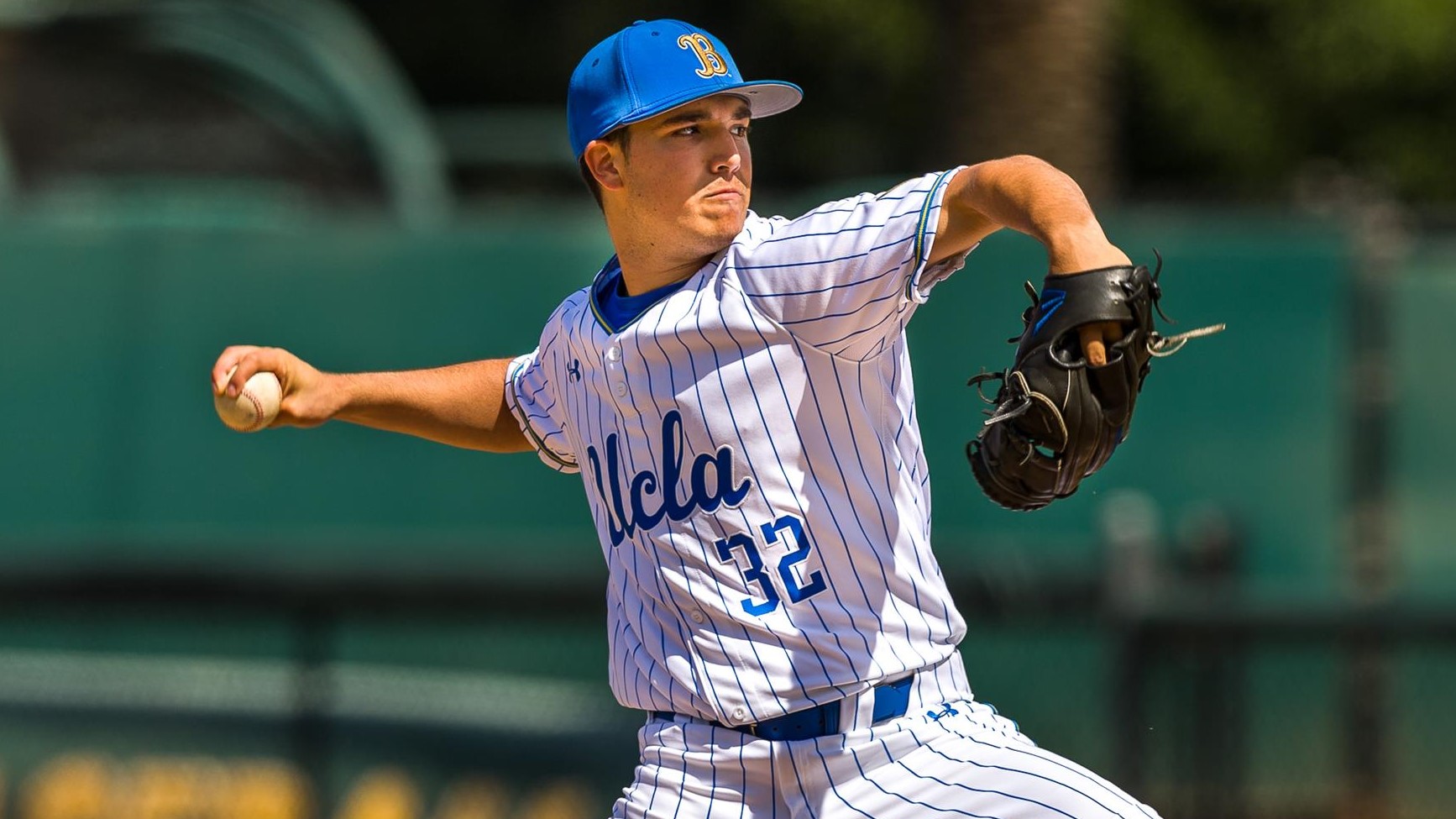
UCLA pitcher and Texas Rangers draftee Ryan Garcia, 21, threw 112 pitches in his NCAA regionals start, then pitched in relief two days later. (Scott Chandler/UCLA Athletics)
In a typical regular-season week of NCAA college baseball, schools will play one midweek game (on a Tuesday, for example) against a non-conference opponent and then a three-game series Friday through Sunday. In short, four games every seven days.
In the opening round of the NCAA playoffs, schools participate in a four-team, double-elimination tournament. This means that if a school loses one of its first two games, it must play five games in four days in order to advance.
This presents two problems:
- The regular season doesn’t prepare a team for the playoffs.
- Workloads for pitching staffs are ramped up radically.
For example, here’s how it just went for Stanford and UCLA, along with the pitch counts for the two Pac-12 teams.
Stanford
- Friday, 1 p.m.: Stanford 11, Sacramento State 0 (122)
- Saturday, 7 p.m.: Fresno State 7, Stanford 2 (169)
- Sunday, 12 noon: Stanford 12, Sacramento State 3 (109)
- Sunday, 6 p.m.: Stanford 8, Fresno State 6 (169)
- Monday, 7 p.m.: Stanford 9, Fresno State 7 (143)
- Total: 712 pitches in four days, 178 pitches per day
UCLA
- Friday, 7 p.m.: UCLA 5, Omaha 2 (119)
- Saturday, 7 p.m.: Loyola Marymount 3, UCLA 2 (135)
- Sunday, 12 noon: UCLA 11, Baylor 6 (128)
- Sunday, 6 p.m.: UCLA 6, Loyola Marymount 1 (129)
- Monday, 7 p.m.: UCLA 6, Loyola Marymount 3 (155)
- Total: 666 pitches in four days, 166.5 pitches per day
Both college teams need to be thankful that there were no extra-inning games.
This would be a challenge for the Dodgers to handle, let alone a college team that won’t have the depth or resources of a major-league team. And not only does the Dodger pitching staff run 13 deep, you can bet the front office would make a transaction to swap in at least another pitcher if the team had any workload issues. Also keep in mind that a 22-year-old like Julio Urías, whom the Dodgers still go out of their way to protect, would be the veteran workhorse of a college pitching staff.
Even in the world of the major-league postseason, teams are never scheduled to play more than three games in three days. Obviously, television coverage is a consideration in the scheduling, but the bottom line is that pitching staffs have no small amount of protection in the MLB playoffs.
Instead, you have UCLA, the top-ranked team in the country, forced to use Ryan Garcia — a second-round draft pick (50th overall) by the Texas Rangers — for 24 pitches on Monday, with only two days’ rest after throwing 112 pitches Friday. The alternative is to rely heavily on second-tier pitchers who have rarely seen action with any stakes at all during the regular season.
The NCAA baseball regionals are a relic from an era when high pitch counts were a mark of achievement, not attrition. While college baseball will be the final chapter of many pitchers’ career, the elite still have futures to worry about. Trust me: I don’t deny the cutthroat charm of the crammed double-elimination bracket, but given what we know about preserving pitcher arms, especially while they are still developing, the current system is deeply flawed.
One solution would be to add a weekend to the playoffs, so that instead of having 16 four-team brackets, you start with 32 head-to-head matchups, best-of-three, that mirror the regular season.
Another path would be to allow for a fifth day in the opening weekend, to at least eliminate the Sunday doubleheader. That way, the Game 1 starter could start a potential winner-take-all regional championship game.
I’m open to ideas. But what the NCAA has now needs fixing.




Comments are closed.